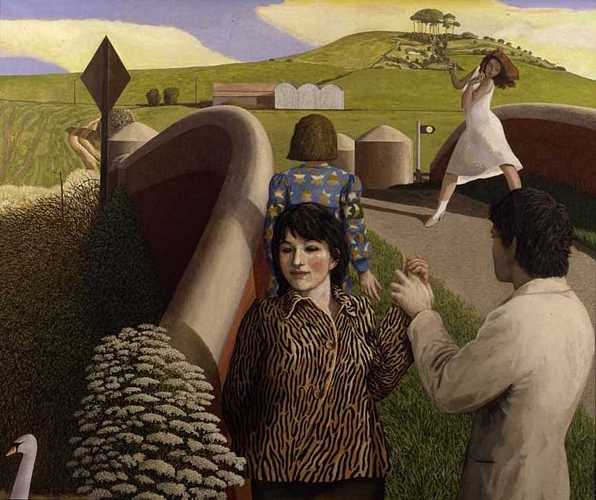7. Never and always
Early in The Four Quartets, his magisterial meditation on time present and time past (which 'are both perhaps pre- sent in time future'), T S Eliot locates the focus of his attention 'At the still point of the turning world'. Eliot brilliantly voices our sense of elusive moments, both in and out of time, of intense importance always just out of our grasp, moments of threshold, brink, of potentially huge significance, that call us back again and again:
Down the passage which we did not take
Towards the door we never opened
Into the rose-garden.
This is David Inshaw territory. In painting after painting he evokes a world both recollected and projected, of intimation and provocative possibility rather than forthright exposition.
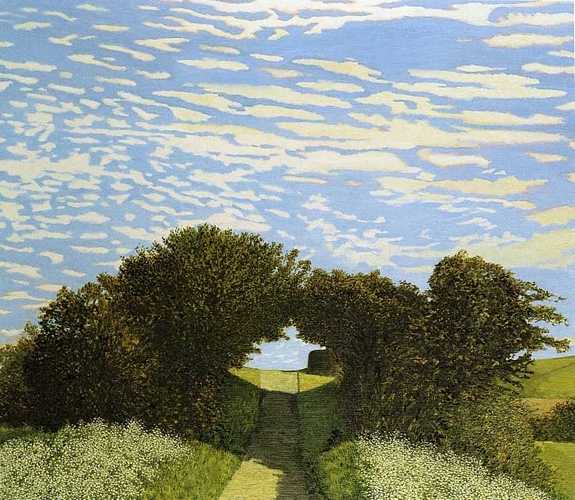
lt is not for nothing that Inshaw has a painting called Still Point. lt is a landscape, an empty lane running through a tunnel of foliage under a cloud-flecked sky. And like so many of his landscapes, it is luminous with possibility. lt recalls another line from Eliot: 'Here, the intersection of the timeless moment / ls England and nowhere. Never and always'.
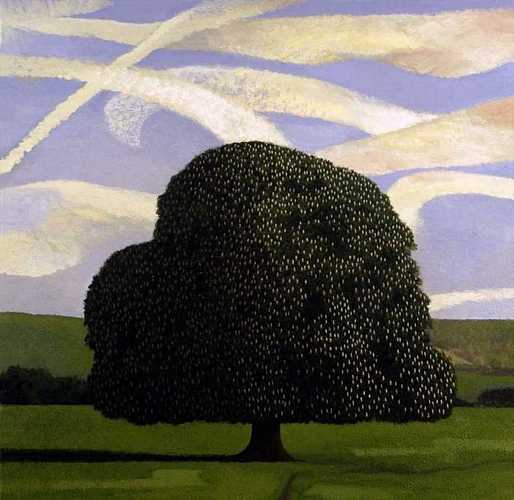
That sense of 'never and always' permeates many of Inshaw's most famous pictures. In The Badminton Game two women in period costume play a ghostly game against the backdrop of a mysteriously blind house (no windows below the top two floors) and a dark cliff of beautiful trees. What does the game mean? Who are the women, and why are they playing out this mysterious combat? In The Cricket Game the cricketers play on as the shadows deal in like the tide, King Canutes ignoring the erasing invasion of time. The batsman drives at the ball and misses, but nobody moves. Stillness lies at the heart of action. This is a match that was never played, and will never be finished, but for countless thousands it is the quintessential English village match. Never and always.
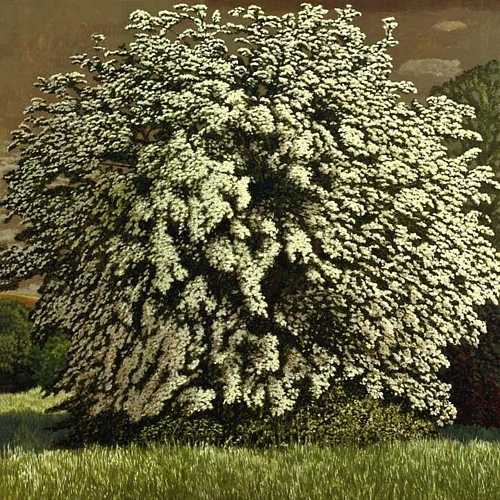
It is a paradox that while Inshaw's figures, though very far from lifeless, have this quality of stillness about them, as though they were posed on the brink of some defining and dramatic action, his trees in contrast, and May Tree is a fine example, are on the move. Some loom so hugely that they seem on the point of embracing us.
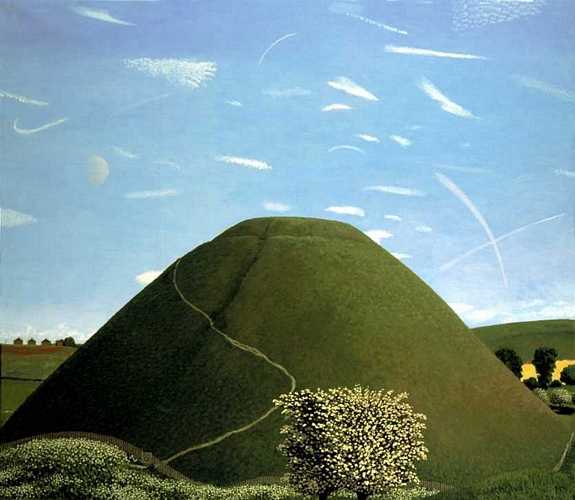
Indeed, Inshaw's landscapes are generally instinct with life. Portrait of Silbury Hill in May is a carnival of activity – the sky crowded with the shuttlecock vapour trails of clouds, the great green pudding of the hill itself garlanded with a ribbon of path, which might have been flung round the maypole, and the attendant may trees clearly poised on the brink of another movement in their eternal Morris dance.
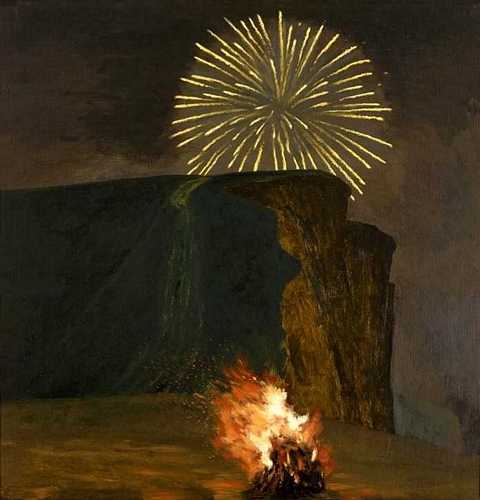
Where Silbury Hill breathes serenity, wonder, exuberance and acceptance, Firework and Bonfire, West Bay introduces bleaker notes. The contrast between the exploding firework and the hunched, unyielding bonfire on the beach is stark – the heady, unconstrained extravagance of love versus the stubborn crabbed certainty of mortality? Or is the bonfire a link back down the centuries to the first cave-illuminating hearth, while the firework stands for the extra- vagant and ultimately mad belief systems that man has followed like so many will-o'-the-wisps?
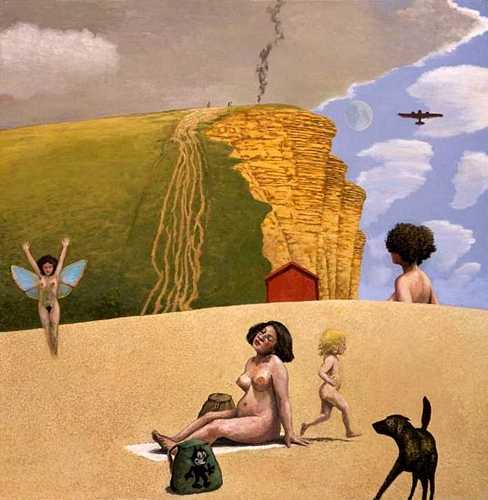
West Bay on the Dorset coast has been an obsessive subject in recent years, somewhat replacing the Wiltshire land- scape of the countryside around Devizes. The West Bay cliffs, opening like a dilapidated concertina, have provided the backdrop to a series of mysterious gatherings of mainly female figures, some looking calmly out to sea, others turning their backs on us, lost in their own private concerns. There are dogs. There are children. There's a helicopter. In West Bay with Pregnant Woman a fairy has blown in. There are as many strands of symbolism to be teased out of these paintings as there are strands of the path that straggles untidily down from the crown of the cliffs.
.jpg)
Predating the West Bay pictures, The Rucksack (Anticipation) is also set on a beach. Two figures towel themselves after their swim in front of a dark rock. Around them a squadron of black headed gulls all pointing somewhat officiously in the same direction, ignore them. The rucksack itself stands guard, a sort of scrotum of possibilities.
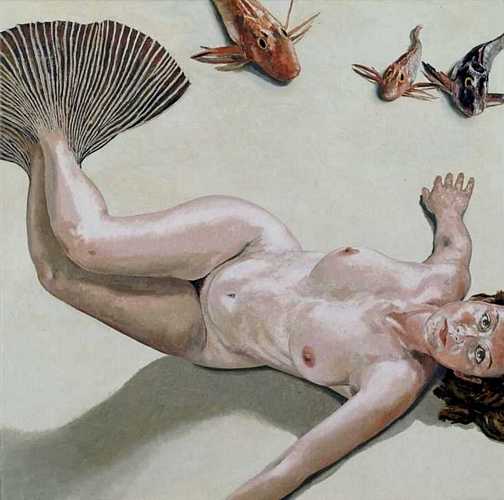
Even should one wish to, there is no getting away from the sexual component in Inshaw's work. He shares his hero Stanley Spencer's empathetic but unblinking curiosity, focusing again and again on the contours of the female nude, whatever position his subjects assume. His women are no allegorical figments, but closely observed flesh and blood. His Mermaid is nine tenths maid, one tenth mer, her fins like gorgeous flares, delightful but impractical fashion accessories rather than a practical means of propulsion.
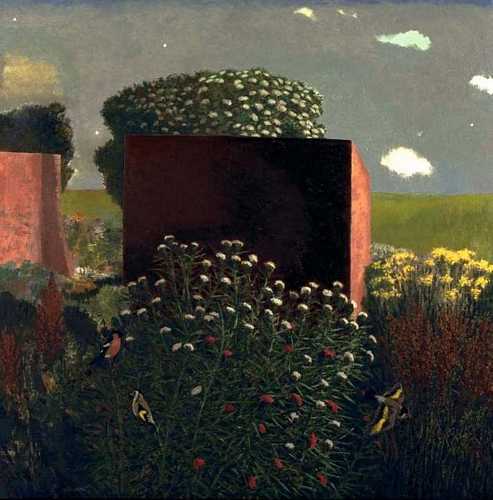
The Thistle and Small Birds has no human figures in it, but is heavy with a brooding atmosphere. The dark block- house has a similar stature to the rock in The Rucksack (Anticipation), a stubborn presence like the wind-buffeted bonfire on the beach in Firework and Bonfire, West Bay.
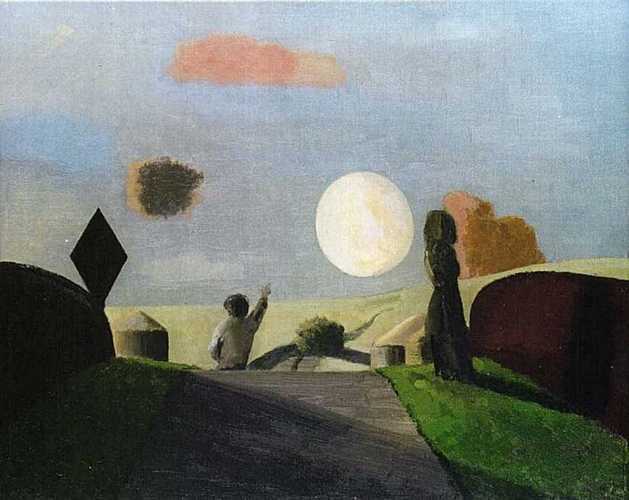
Even without human figures, Inshaw's landscapes are electric. Peopled, they can be almost unbearably intense. In Hand Holding, for example, three women and a man on a low bridge to the foreground of a luminous landscape provide a drama of attraction, betrayal, recrimination and revelation. The picture is full of tension, foreboding – primed, dangerous, exciting, exhilarating. And yet it maintains a dreamlike distance, an overview in which possibilities are still alive – as the leaping figure at the centre of the bridge suggests – and quite possibly alarming. As T S Eliot warns, 'do not call it fixity / Where past and future are gathered'. The still point can be positively explosive.
